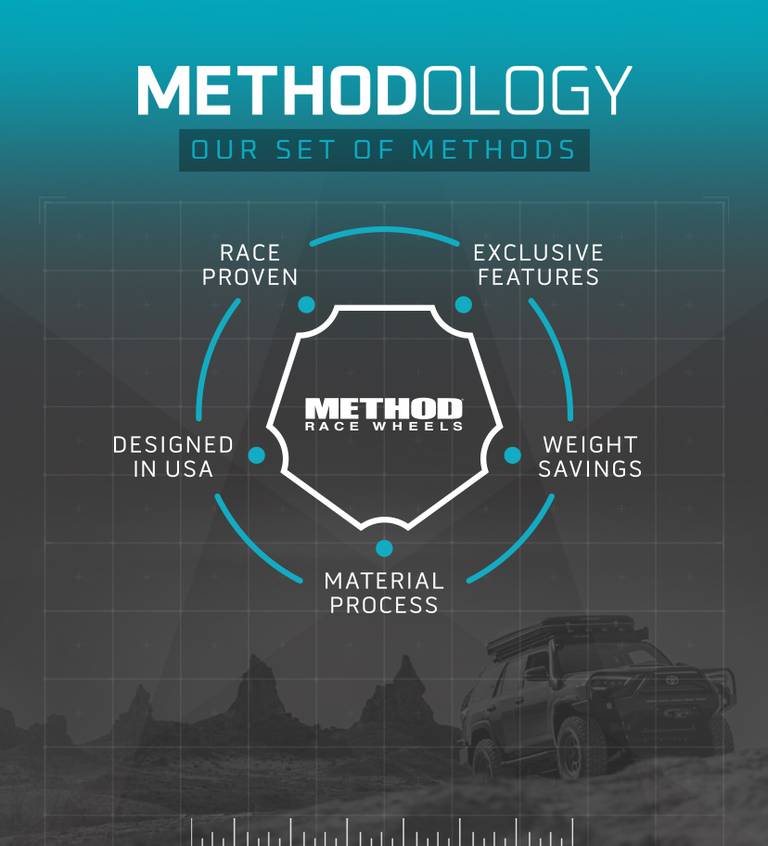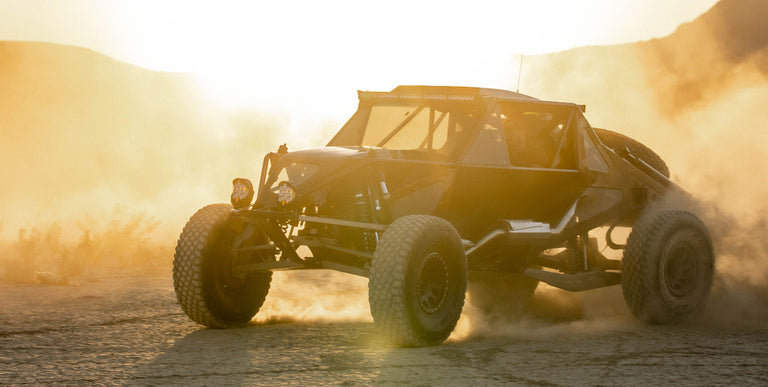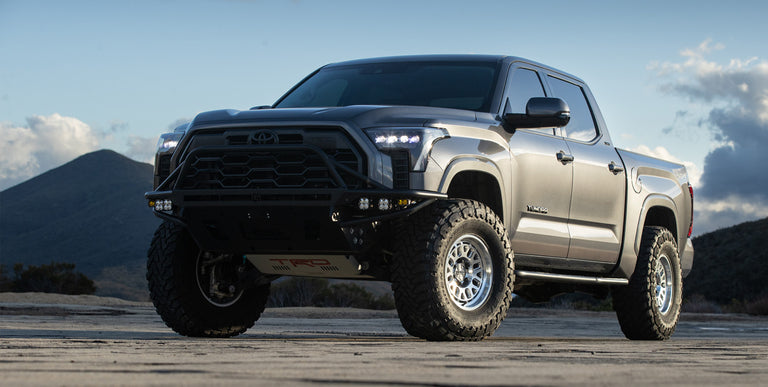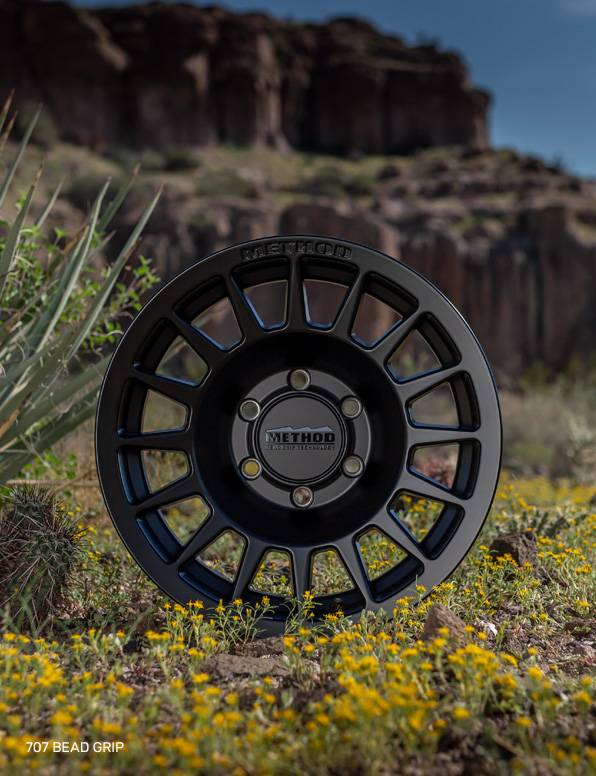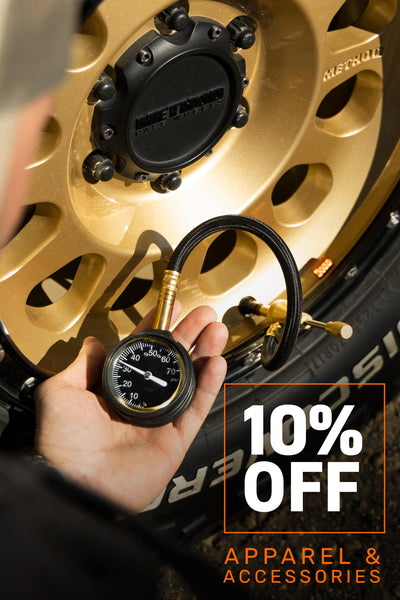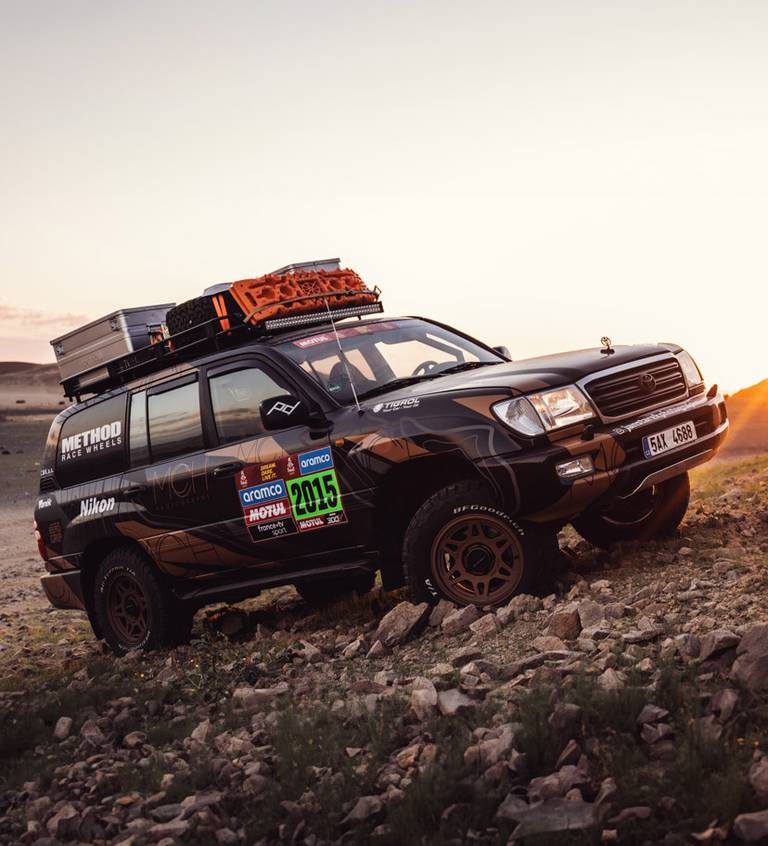
By Marian Chytka
(Originally featured in OVR Issue 05 2023)
What does it take to go to the Dakar Rally as a photographer? You might be thinking: why would anyone even write about that? You just grab a camera, get to wherever the race is happening, rent a car, book some hotels, go out to the stages and shoot. I wish it was that simple. To shoot Dakar as a professional takes a bit more effort.
For me, it basically takes all year just to get everything ready. This was my 12th time, and I had a team of nine people in three vehicles and we rented two of the seats in one car to other journalists who traveled with us.
It is a great adventure and it is also the most important event for me and my agency in terms of business. We attend several different events yearly all over the world to keep clients happy, build those relationships and form some new ones, so we are even able to go to Dakar and make the trip better every year. Dakar is one of the biggest motorsport events in the world and it can get quite expensive no matter what category or position in which you attend.


To get the accreditation, among all the other conditions you need to fulfill, you need to pay around $5,000 USD per person if you are a photographer and $7,000 if you are a videographer. You also need to pay a fee of around $2,800 per media car that you sign in. So when I said it was nine of us in three vehicles (six photographers and three videographers)… you can do the math. We were on about $60,000 USD to start with, and that’s before we even get there and do anything.
That’s just for the opportunity to be there and to be able to shoot. Then add the flights, some hotels (even though we slept most of the time in a tent), photo/video equipment, the salaries I needed to pay all my guys for two weeks of non-stop work, and most importantly the vehicles and their shipment.
We can have spare cameras and spare computers but we do not bring a spare vehicle with us, and they need to be 100% ready before we ship them to Saudi Arabia, where the event has taken place since 2020. If you want to attend, and you have passed all the conditions and you have your money for the accreditation ready, you need to learn how to move around. There are a few options. Either you pay for the “plane pack”—not sure you want to do that as the costs are quite ridiculous and you only move from bivouac to bivouac anyway—or you travel in a vehicle on the “assistance route,” or you are in a vehicle going out on the “race route.”

If you are on the assistance route you can only go from one bivouac to another bivouac (the main basecamps that usually move every day), and if you are lucky you might see the competitors if they happen to cross the main road you drive on. There is a strict route you need to follow, as it is exactly the same for all the support vehicles, and they can’t interact with the race until the competitors reach the bivouac every day. For that you just need a regular 4x4 rental vehicle (although it is not always cheap or easy to get one in Saudi), and you do not need to ship anything.
The race route is definitely the most exciting option, as you can actually follow the same route of the timed stages as the competitors. You need to be a good navigator and driver, but even that’s not enough. To be allowed to go out to the stages you need to have a vehicle prepared and built within some regulations, and you actually need to pass admin and technical checks before the rally—same as the competitors do. All the regulations are mainly for our safety; we need to have a roll cage in the vehicle, four-point seat belts, two spare wheels, a fire extinguisher, seat belt cutters, recovery gear, blankets, and so on. And that’s why I said that the vehicle is really important for us, because if it breaks down you can’t just go to the nearest rental agency (you are usually in the middle of nowhere, after all) and rent a car with a roll cage.
Dakar always happens at the beginning of the year in January, but we need to be ready well ahead of that as we need to load and ship our vehicles from Europe with all the other racing and support vehicles at the beginning of December. That’s when we drive down to the South of France, to the port of Marseille, put the cars on a ferry, and pick them up again when we arrive in Saudi Arabia.
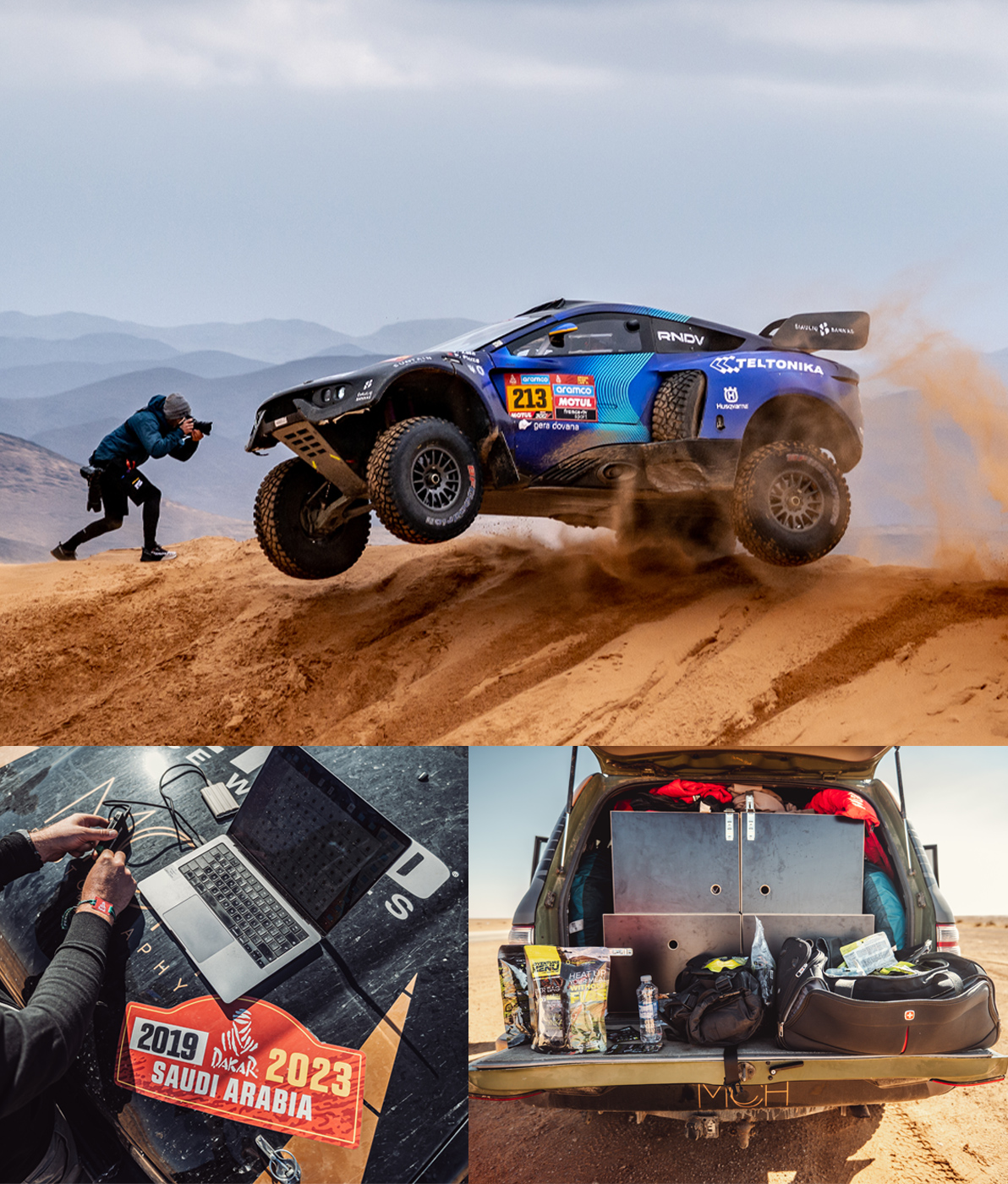
We always had one vehicle fully prepared for the race route: my Toyota Land Cruiser 80 that I have been using since Dakar 2014, and we either rent a seat in another car or have someone else bring a second vehicle (as we did in 2021). But this year we decided to build another vehicle so we could be totally independent and in full control of our plans.
We had some simple conditions when think-ing about the new vehicle. It could not be too new, and it needed to burn petrol, not diesel. We did not want a car full of electronics... just something simple we could rely on. If an issue does arise you just deal with mechanical fixes and not electronic or software errors.
We wanted a petrol car because 99% of vehicles in Saudi run on petrol. You cannot get diesel just anywhere and the quality is poor, as the only vehicles that run on it are generally old trucks that look like they could run on anything. We ran into problems back in 2020, when my diesel LC80 broke down the very first day. It was the fuel pump, and it caused some more serious damage to the engine mainly due to the poor quality of the fuel. We were not even able to fix it at any local or official workshop because diesel parts are so hard to come by in Saudi.


In the end we chose a Toyota Land Cruiser 100, about 10 years younger than my 80 but still a capable off-road vehicle. There is lot of space inside, and most importantly it had the 4.7-liter V8 petrol engine. The whole build was done in about one month, from acquiring it from the previous owner to loading it onto a ferry in France. We completely stripped it, got rid of most of the interior including the seats and seat belts, got the measurements for the roll cage, and started the process of making a bunch of customized things at several differ-ent workshops—all at the same time.
We worked on it every single day and still were not able to make all the adjustments we wanted. Modifications included the custom roll cage, four OMP racing seats, two extinguishers, a custom roof rack, undercarriage engine shield, two electric converters, 700-watt front LED bars, four-point seat belts, two spare wheels (one underneath, one on the roof). The Toyota was not our only means of transport, but it would be our home for more than two weeks and we needed to carry everything with us. There would be four people, each with a lot of photo and video gear, and we also needed to fit in our sleep-ing equipment, clothing and food. For this we used a custom-made storage system in the cargo area with two 90L aluminum boxes and a single 45L box for spare parts.
We carried extra gas cans as the OEM fuel tank had only 96 liters (25.4 gallons). My LC 80 has an extra fuel tank, so altogether we have around 125 liters, but there was no time to do this to the 100 (and in the end it was not even needed). We also had navigation, tracking and satellite communication equipment, shovels, recovery boards, an air compressor, high-lift jack, and last but not least brand-new Method wheels shipped directly from the States. (I am also proud of the fact that we did not just make it functional, but also made it look good.) In only three days we got the Toyota fully wrapped in black and then re-wrapped it with the bronze, gold, black-gray design—which I just love and which I believe helped us make extra impact.
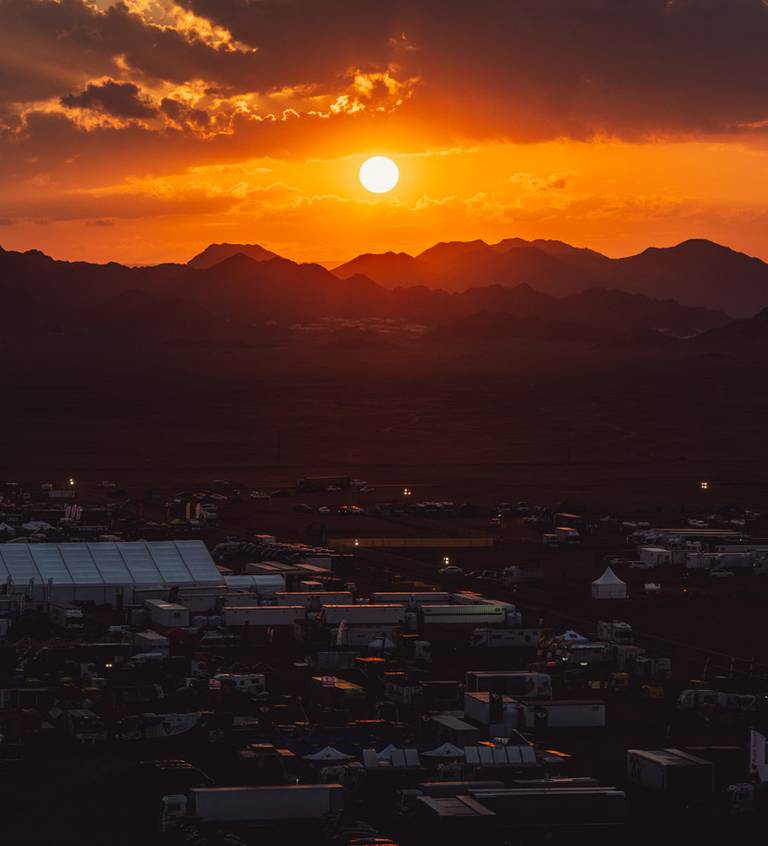
Now, getting out to the stages. How does an average day for a Dakar photographer look? You wake up around 4:30-5:00 (if you are lucky), pack your tent and sleeping bag, jump into the car and wait for updates from the organization. As Dakar is a navigation rally, we get almost no extra information so it doesn’t get out to the competitors and no one gets any advantage. It’s good for the sport, but makes our work and day-to-day lives difficult and really frustrating at times. We receive some information about the upcoming stage the prior evening, and for each stage we receive a list of about five photo spots that we can scout the next day. Generally included is a tiny photo someone took when they were doing the recce and roadbook for the stage and a sparse, written description of the spot—something like “Sand dunes level 1/2/3... Sandy road in between rocks, etc.” Also the distance from the bivouac, the estimated time you’ll need to go there, estimated time of arrival for the first competitor, the time you’ll need to get to the next bivouac, as well as the time to get to that point on the stage. These points we get the evening before are never points that are actually on the stage itself, only nearby. They call it a proximity point—usually still on tarmac, easy access with a mobile signal, and there you wait to get final details. So when you wake up, pack, and jump into your vehicle, what you’re really waiting for are the messages on a WhatsApp group that give you all this much-needed info. We receive the final coordinates, a code that unlocks the track in our GPS, and we go. This last part usually involves gravel, stony roads, completely off-road terrain, and quite often sand dunes. When we reach the stage, we can in theory follow GPS where we can see the line for the stage. But we usually do not have that much time, so we just drive for a few kilometers, trying to find different vantage points. Once outside the vehicle we usually split up and do not stay together (but not too far from one another) and wait for the first competitor.
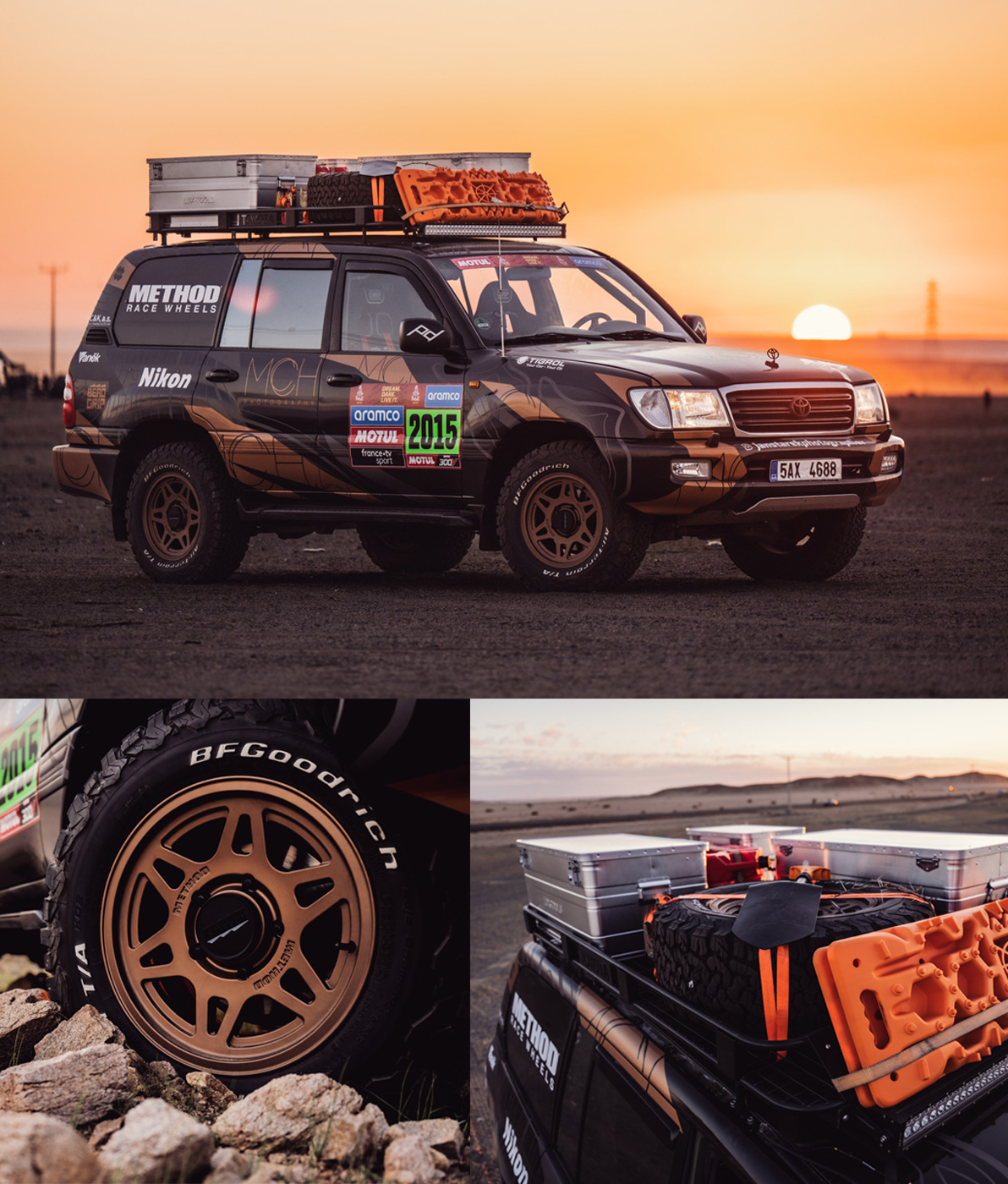
Bikes, quads, cars, SSVs, trucks—we need to wait for almost everyone. While working we do not stay at just one spot and try to keep moving around, so we are able to have a few different compositions and places to use so not every single person has the very same photo. If the vehicle is close enough (some-times you end up walking way too far) I try to go back in between bikes and cars, download my material, try to edit as much as I can, and then go back out to shoot. Once we are finished shooting we meet back at the vehicle, and if there’s time, try and eat something. Since the beginning of my Dakar career I have been using Adventure Menu meals (real food to go). It is a company from the Czech Republic (where I am from) that produces pre-packaged meals using different recipes, real meat, good nutrition, and a flameless heating system so you can have a warm meal without carrying propane.
When we are back in the vehicle and back on the road (tarmac), we all start to download the material we shot that day and begin to edit. One guy on the team, who basically only shoots bikes, oftentimes collects our memory cards then goes back to the vehicle early to immediately begin editing images. This al-lows us to deliver the first bikes and also start to edit other photos earlier. There’s not much time to edit; we usually have a limit of about 40 seconds to one minute per image.

When we have some photos ready we start to send them out. We use our own proprietary system to deliver content, and most of the time in Saudi we just used local SIM cards to send data out. The coverage is pretty good even in the desert of the Empty Quarter, so we barely needed to use the internet connection in the bivouac (which is expensive).
We obviously need to shoot more than just action on the stages, and that’s when the third vehicle comes into use. There is always someone traveling with it on the assistance route who shoots in the bivouacs when the riders and drivers arrive, as we are usually still somewhere out in the desert and would not be able to see that happen.
Once we are done with the edit and upload and we get the information for the next day, we grab some dinner. There is a huge catering tent for all the people in the bivouac where breakfast, lunch and dinner are served. I only got the chance to have breakfast once and lunch maybe twice, and so we at least try to get dinner there every day—also feeling better that we got something for all the money we each paid to be there.


If there’s time and it’s not too cold you might catch a shower—then we usually jump into the vehicle again and drive out toward the next stage. We’d rather drive in the evening so we can sleep a bit more in the morning—and also for better quality sleep. Trying to sleep in the bivouac is a complete mess—generators, vehicle engines running, all sorts of other noise and lots of light, all night long. That’s why we set up some-where in the desert, start a fire, chill and talk for a bit. The alarm clock wakes you up in about four hours regardless, and you need to be ready to go again... every day for the next two weeks.
It takes some time to adjust at the beginning, but once the rally is running and you find the rhythm it’s not that difficult, and you can get through the whole rally fairly smoothly. It was like that this time for the first few days, so much so that I began think-ing to myself, “This is a bit too easy for Dakar. For sure something will happen.”
And unfortunately it did. One of us after another began to get sick—fever, weakness, sweating, out of breath... not really a state that you want to be running the dunes in. For the first time in 12 years I skipped one of the stages and went on to the next bivouac.
The positive thing was that no one even realized, so I found out that the team actually works very well—no matter if I am there or not.
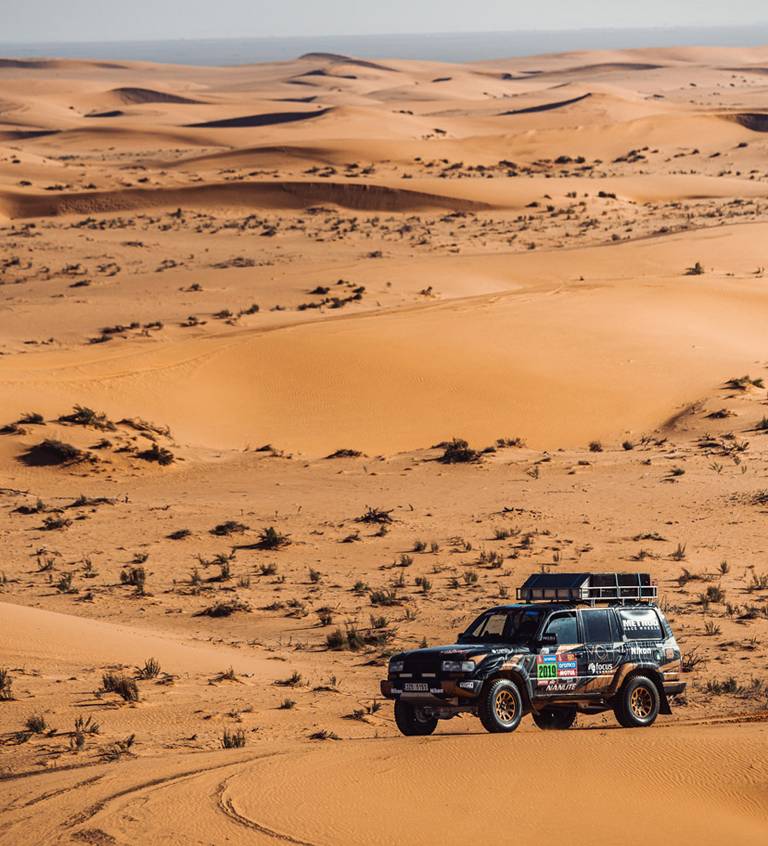
DRIVING & NAVIGATION
When it comes to taking photos at the Dakar Rally, the logistics are 80% of it—meaning mostly naviga-tion and driving. In the story I mentioned how the system works with the info we get, but that only gets you to one point on a track. From there you can drive even more, and that’s when navigation and driving skills come into play.
We have a Tripy in our vehicle, like a small GPS device with stage info you unlock every day with a code that is sent to you. An arrow indicator directs you to waypoints, but you need to be able to read the terrain, especially if you’re in the dunes and it’s not always possible to go in a straight line from one point to the next. You can toggle between previous points or to the next one so you can get an idea of the route. When you reach the actual track on the stage (100-200 meters) you can actually see a line of the stage on the Tripy and that’s how you can best navigate.
One day we did not like any of the points we got. We more or less knew where the finishing point would be and so we took a risk. We knew we had some time and could afford to arrive late at the next bivouac. The closer you stay to the finish, the more time to the next bivouac. The gaps among the competitors are much bigger, it’s getting late, and you arrive in the dark. We sent one car to the beginning of the stage to capture photos and the rest of us tried to find our way to the finish using only Tripy, without the help of GPS coordinates. It took some effort to sit with a map the night before, as we did not know where the finish was, but we knew the distance of the stage and we more or less knew the shape of the route. So you read the map and try and guess where the finish could be.
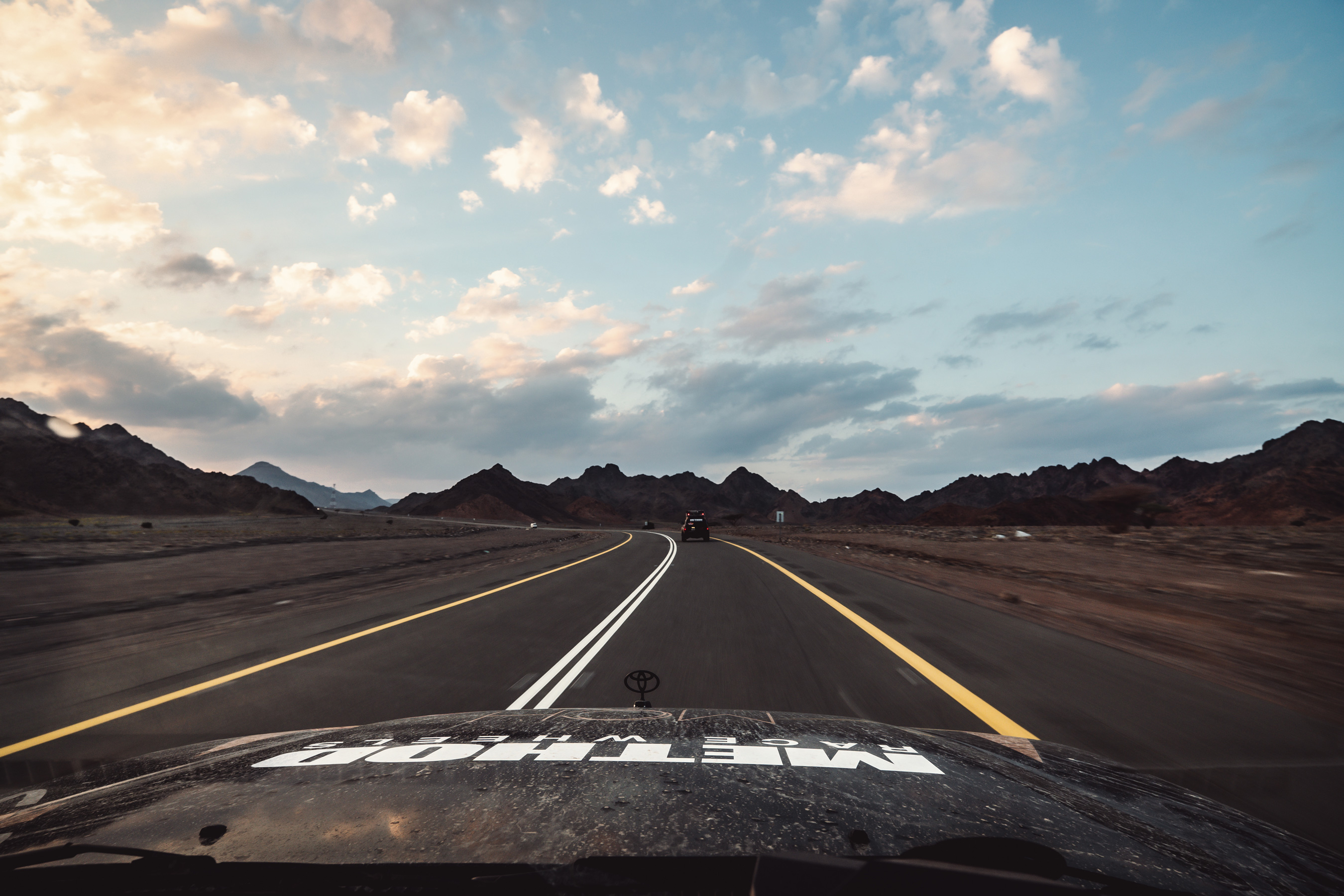
We put a point into Google Maps and ended up guessing accurately. We had lot of time before the competitors arrived, so we could drive deeper in. We drove 15-20 km in the dunes, found the “most interesting spot,” stayed at the top of that dune, and hoped the first riders would see us and come to us.
That’s how it usually works. If they see you from a distance and you are more or less on the track they come to you as they think you are always right and you have the correct info. And that’s exactly how it all happened. The first group of bikes actually passed half a meter from us and we got some of the best shots we took (at least from the first part of Dakar).
Sometimes you can see the tracks of the opening cars, or the TV guys, who are provided more information than most, and you can try to follow them. Especially in the rally’s early stages, when the sand was wet, the tracks were really nicely visible. So we knew that someone had passed in front of us and we kept driving. There must have been something good if the TV cars kept driving.
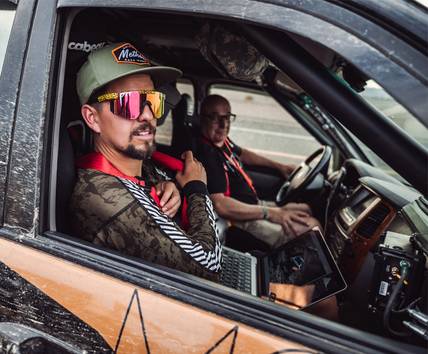

There are two aspects to driving. One is driving on the regular roads and highways—that’s probably 80% of Dakar. The other 20% we drive off-road when we need to get into and out of the stages. I do have some experience with dune driving, so whenever we get close to the track we stop and I jump behind the wheel. If something goes wrong like getting stuck, I want to be the one responsible.
Our press car is quite heavy, with four people and all our gear, and you can actually feel it in the dunes. We always deflate the tires a bit, depending on whether we are only on sand or if we know we need to drive on gravel. We usually would go max to around 1 bar (14.5 psi). If we are in trouble I might go a bit lower, but not too much. The Method Wheels’ Bead Grip Technology helps with that, so we can go lower without having to worry about the tire de-beading.
If possible, I always try to keep the vehicle near me, especially when we are in open terrain. If I see something interesting in the distance or my current position is not that good, I’ll jump in and drive fur-ther, but otherwise we try to play it safe and not go too deep into the dunes.


DIFFICULTIES
There are pros and cons to having Dakar in Saudi. The roads are better compared to those in South America, mobile coverage is better, and the time zone is advantageous when we are actually ahead of Europe and most of the other countries we deliver content to.
There are of course some cons. Even though the locals are friendly, the language barrier is bigger than it used to be in South America. The people do not really know much about Dakar and they generally have no idea there is something like that happening. In South America there were lot of locals that you could have asked for directions or for help. Anytime I went out to the stages and forgot to take water with me, I always knew there would be people who were more than happy to offer cold drinks or some food.
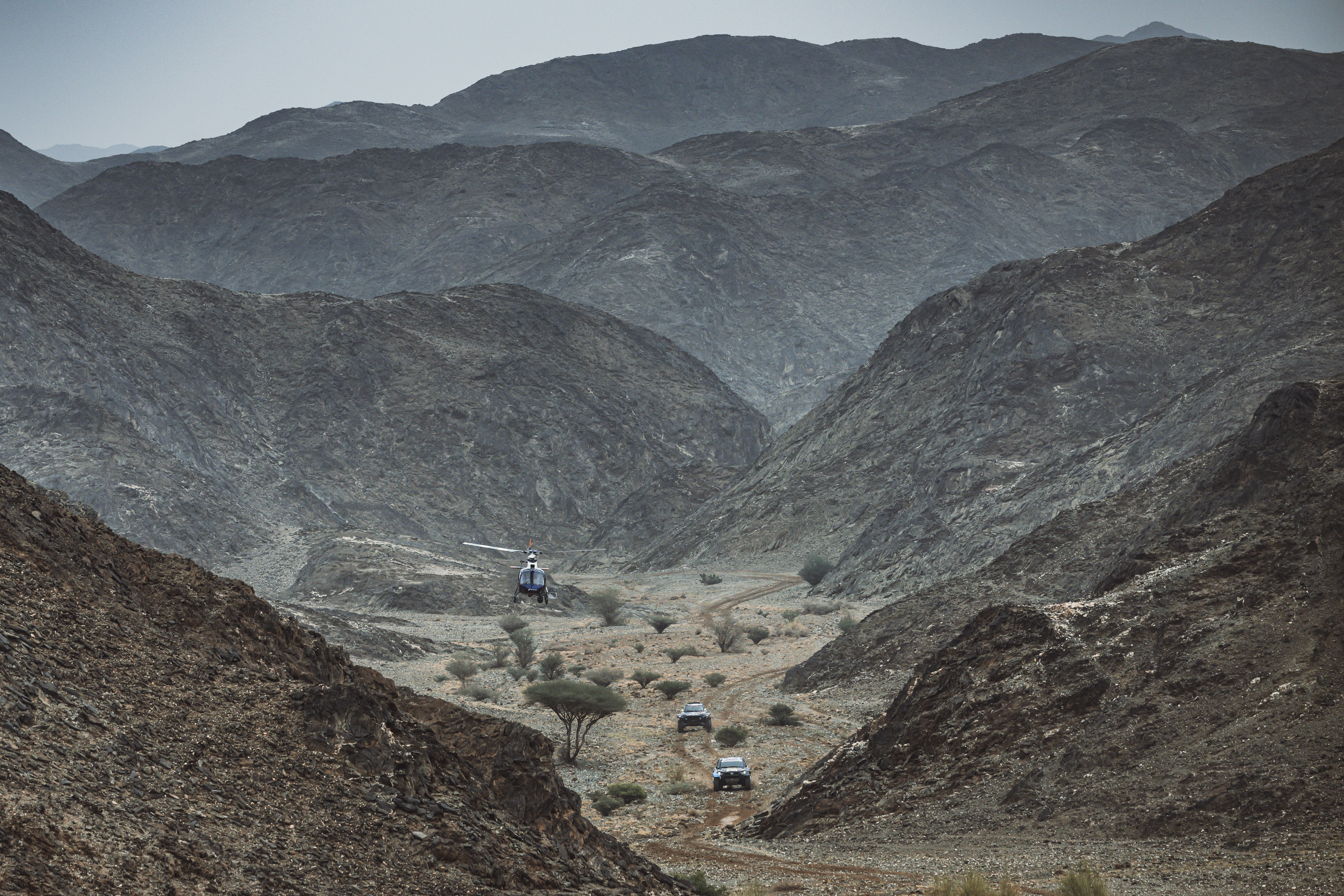
Fuel is another difficulty. One of our vehicles runs diesel, and that is difficult to find outside of the bivouac. We usually refuel there, but sometimes it is just not enough and finding more is tricky. You can forget about it in the cities, and really only find it on the bigger highways. On the other hand, when you do find it, it’s very cheap. One liter is about $0.15 USD.
Weather can absolutely change everything and make the race either amazingly nice or a complete nightmare. We spend most of our time outdoors and the outcome of our work depends a lot on light conditions. So if you could choose from 1.) Nice and sunny with a beautiful sunrise, nice temperatures, and dusty trails that fill the photos with action, or 2.) Rain, a sky full of clouds, no dust and no light, you would definitely choose 1. But we only got 2 for the first half of the rally. The weather made it difficult for everyone this year, including us.
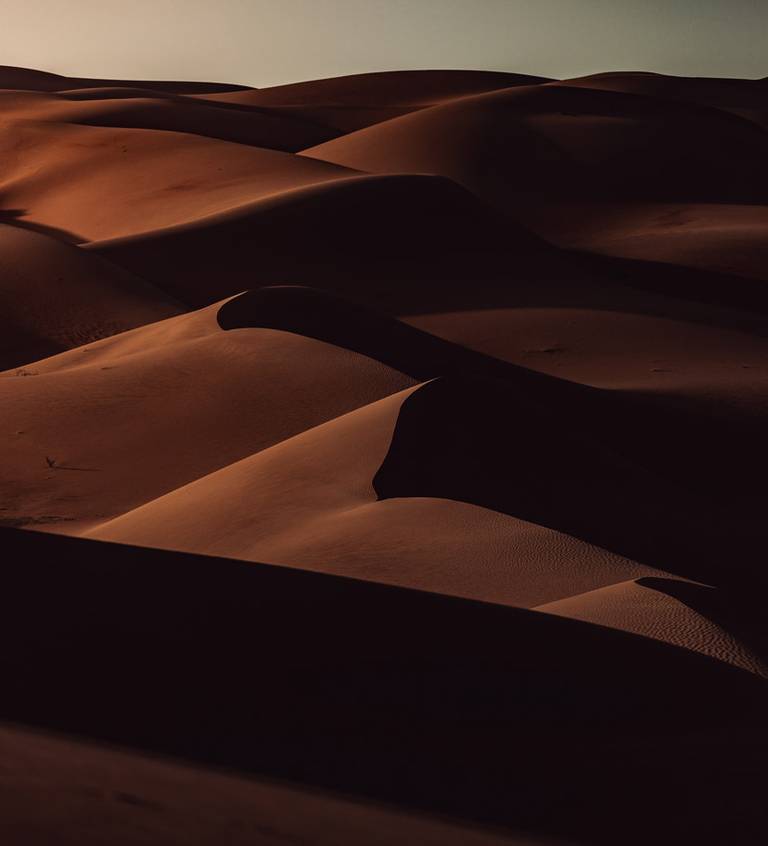
-
ABOUT THE AUTHOR
Originally from Czech Republic, Marian Chytka is the founder of MCH Photography, an agency that specializes in motorsports photography, covering everything from Rally Dakar to Le Mans 24H, F1 Monaco and more.
Find out more about Chytka and MCH by visiting mchphoto.cz. You can also follow him on Instagram @mchphotocz.
* This article was originally featured in OVR Issue 05 in 2023 (OVRMAG.COM). *
